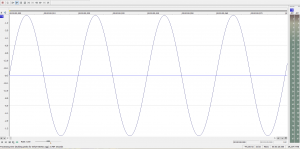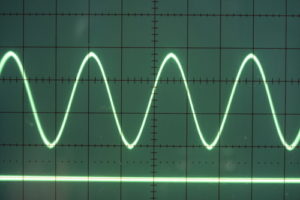Hey Everyone,
Just wanted to post a quick update. When I was describing my sound system tuning process to a friend, it occurred to me that this could be a pretty cool little update. I am going to keep it semi-simple as this can be a wormhole of confusing information.
So here is what is going on. Whenever you have a very powerful sound system that you hobbled together yourself, it is pretty risky to just tune your subwoofers by ear, especially if the output of your amp is close to the RMS rating of your subwoofers. You can easily blow up a speaker by sending clipped output signal to them from the amp.
What is a clipped signal? What does it look like? For this conversation, we are going to pretend that our sound is a perfect sine wave. The image below shows our perfect sine wave on the left. On the right side, you can see that the sine wave is now flattened at the top and bottom. This is called clipping.
Clipping happens when an audio signal is pushed louder than the amp can handle, so some of the data is cut off from the signal itself.
Now, back to my machine… What I need to do is make sure that none of the audio signals are clipping on my machine, but still drive the amp and subwoofer as hard as possible. So here are the high level steps that I took to verify that everything was ok.
- I created a sound sample which was a perfect sine wave running at 50hz (50 cycles per second) and set it to be the default music on the Total Annihilation machine. (see image below)

- I then disconnected the audio cable from the computer to the subwoofer amp and hooked up my oscilloscope to the output signal from the computer. This allowed me to physically view the sound wave on my screen, you know, with my eyes. This is called checking the pre-amp signal (in case you wanted to know).
- I then started a game and took a look at the 50hz sound wave that was now playing. You can see from the image below that the signal is nice and smooth (no clipping). Yay!

- Next I plugged the computer audio cable back into the subwoofer amp and disconnected the subwoofer.
- The next thing I did was turn down the amp gain all the way to 0% (this is important).
- The oscilloscope was then hooked up to the high level output of the subwoofer amplifier, just like how the speaker is hooked up.
- I started another game to get the 50hz signal playing.
- Then I turned the gain amp up slowly until I could start seeing the sine wave. I kept going until I saw a bit of clipping in the signal and then backed it down slightly under that limit. This is simply called the amplifier signal (post amplified signal).
- Success! This now has set my amp to it’s maximum clean output and I will not have to worry about blowing the (not cheap) subwoofer in my game***. ***Yes, I could technically still blow it, but we do not have to talk about that now…

OK, OK, so there are a TON of technical details and nuances that I purposely left out of this post as it would have made it not fun to read.
Well, that is about it. You now know how to properly check your audio amps for clipping. All you need is some time and an oscilloscope. 🙂 Also, the sound system has never sounded so good in Total Annihilation.
See you guys/gals at Expo 2016!


